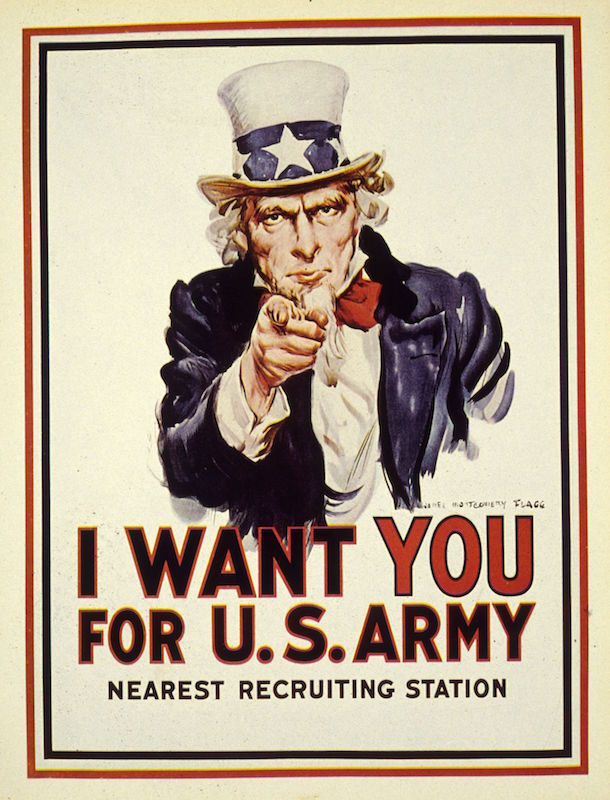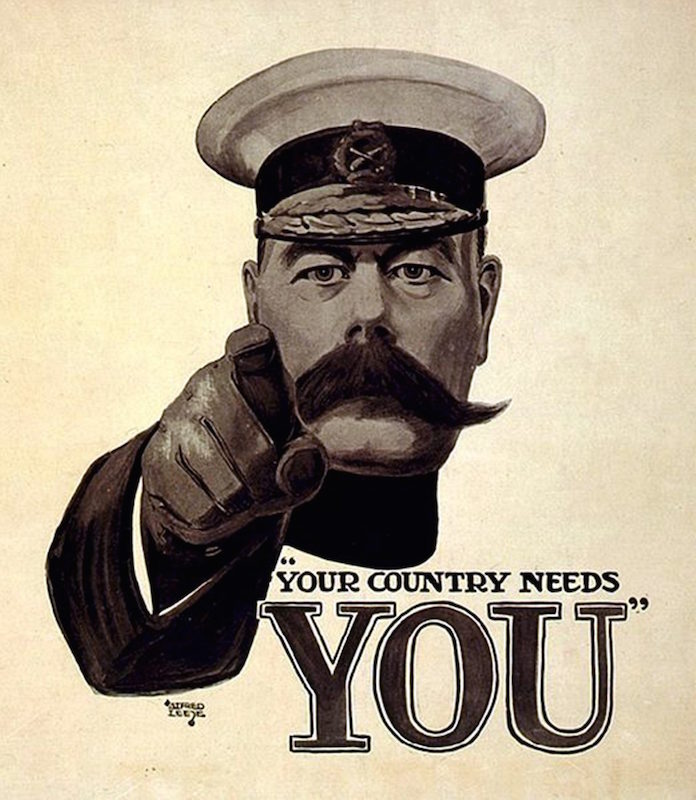
In honor of the 100th anniversary of the U.S. joining World War I on April 6, 1917, a new TIME special edition looks back on the impact of that conflict — including its role in creating one of the most iconic posters in American history.
World War I produced one of the most memorable images in American history: the U.S. Army recruiting poster that depicts a commanding Uncle Sam pointing his finger at the viewer and urging young men to enlist in the war effort. Painted by noted U.S. illustrator James Montgomery Flagg, the image first appeared on the cover of the July 6, 1916, issue of Leslie’s Weekly magazine with the title “What Are You Doing for Preparedness?” The U.S. would not declare war on Germany until April of the next year, but the storm signals were clear. The image was later adapted by the U.S. Army for the poster with the new, unforgettable call to action. More than 4 million copies of it were printed between 1917 and 1918.
Model? “Uncle Sam” may have been Sam Wilson, known as Uncle Sam, a meatpacker who stamped the initials “U.S.” on barrels of meat he sold to the Army in the War of 1812.
Giddyap! By the mid-19th century, Uncle Sam had taken on his classic look: long, lean, goateed and wearing a patriotic getup, as Thomas Nast drew him in 1877.

You talkin’ to me? Artist Alfred Leete drew an image of British war hero Lord Kitchener wagging his finger to draw recruits in 1914; it was a memorable success.
That face U.S. illustrator Flagg used Leete’s design as the basis for his poster. And he used his own visage as the model for his bushy-eyebrowed take on Uncle Sam.

Read more in TIME’s new special edition, World War I: The War That Shaped Our World, available on Amazon and in the TIME Shop.
More Must-Reads From TIME
- The 100 Most Influential People of 2024
- The Revolution of Yulia Navalnaya
- 6 Compliments That Land Every Time
- What's the Deal With the Bitcoin Halving?
- If You're Dating Right Now , You're Brave: Column
- The AI That Could Heal a Divided Internet
- Fallout Is a Brilliant Model for the Future of Video Game Adaptations
- Want Weekly Recs on What to Watch, Read, and More? Sign Up for Worth Your Time
Contact us at letters@time.com